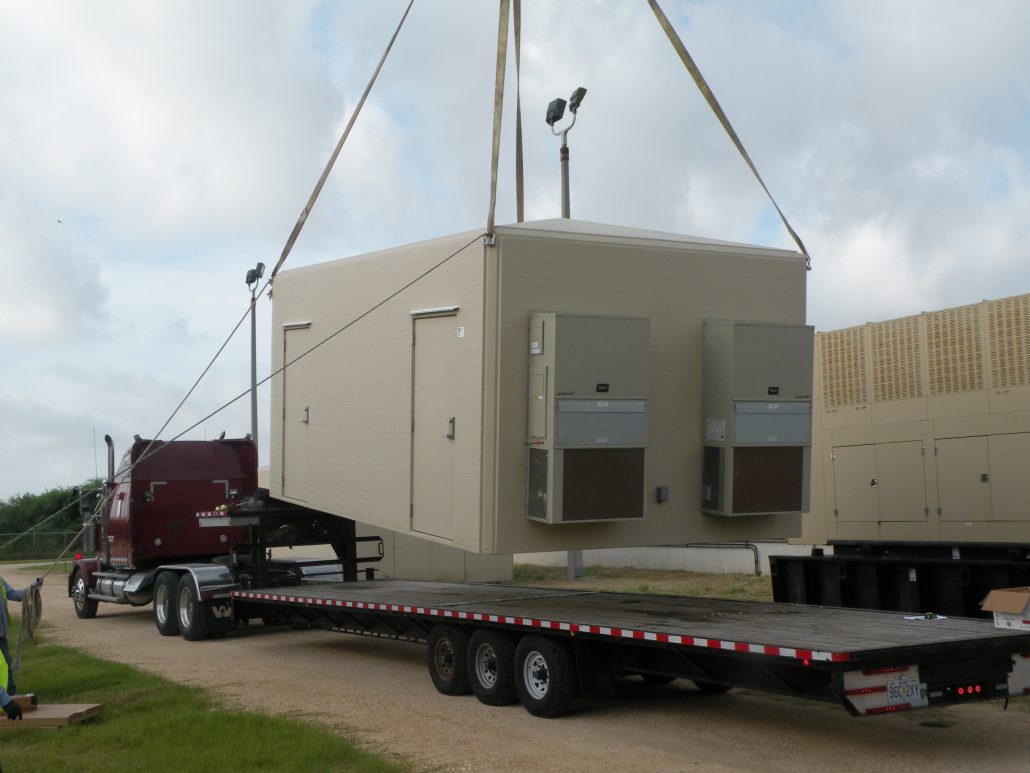Electrical Equipment Protection for Wastewater PlantCase Study
PREFABRICATED SHELTERS SAVE VALUABLE TIME: “Shelter Works was a big timesaver.”
Off-site construction has grown in popularity across many industries due to its efficiency and reduced impact on project sites. A prime example of this trend is the wastewater treatment plant project that Dave Schoster of CH2M Hill managed, where Shelter Works provided four fiberglass buildings. Initially, the plan was to use concrete structures, but logistical challenges led to a shift toward prefabricated fiberglass buildings. This decision streamlined the project timeline and eliminated many on-site resource demands.
Off-Site Vs On-Site Construction
Concrete buildings come with significant time and labor requirements. In traditional on-site construction, concrete buildings must be cast in place, which involves setting up forms and pouring the concrete. The curing period can take 7 to 28 days, depending on weather conditions and the site requirements. Additional finishing work is necessary once the walls are cured, including installing doors, windows, and electrical systems. Often treated as a separate phase, the roof requires its own casting and curing process, adding more time to the overall project. This on-site process can take weeks, if not months, to complete.

For the CH2M Hill project, the contractor faced delays that would have made it impossible to meet the project's demanding schedule if they had stuck with the concrete solution. In contrast, Shelter Works' fiberglass buildings were:
- Prefabricated off-site.
- Arrived on location is fully assembled and ready to install.
- Saved substantial time and labor.
Seamless Installation of Fiberglass Shelters
A key advantage of off-site construction is the ease of installation after they arrive at the project site. The fiberglass shelters arrived with pre-wired lighting, switches, receptacles, and 3-ton Bard units. Installation was simple: the shelters were set in place and bolted down in hours, a significant time savings compared to the multi-step process of constructing concrete buildings.
In addition to faster installation, the off-site construction approach minimized the consumption of on-site resources. There was no need for extensive on-site labor, heavy equipment, or additional materials beyond securing the building to its foundation.
Durability and Long Term Value
Shelter Works' fiberglass shelters are designed to last. Unlike concrete buildings, which often come with a one-year contractor's warranty, Shelter Works offers an industry-leading 25-year warranty on their fiberglass shelters. This longevity ensures that clients receive a long-term solution without worrying about frequent repairs or structural degradation.
Customization and Performance
The shelters protect electrical equipment that is exposed to ambient heat and the heat generated by the equipment. Each shelter has two large Bard air-conditioning units, 2" foam in the walls and 3-1/2" foam in the roof to prevent overheating. The load-bearing walls are reinforced with wood to support the extra weight, ensuring the structural integrity of the units.
Working with Shelter Works
Dave Schoster summed it up best: "Overall, it was a cost-effective system that didn't consume any resources on site. The Shelter Works solution shaved several weeks (if not months) of time off of the project."
Off-site construction saves time and significantly reduces the strain on resources at the project site. With Shelter Works' fiberglass shelters, clients receive a durable, cost-effective, and long-lasting solution that keeps projects on track while minimizing on-site disruption.

